The Hellenistic ancient city of Ambelos or Xerokambos is located 1 km southeast of Xerokambos village…
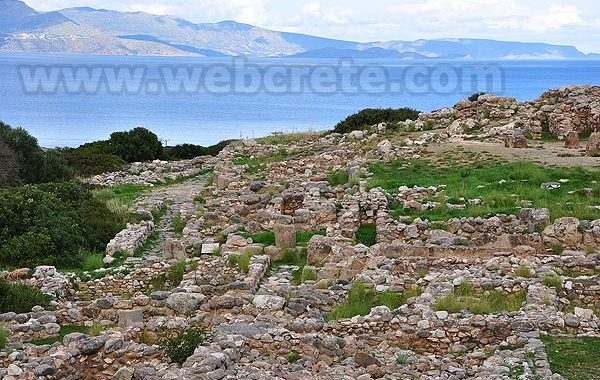
Gournia archaeological site
Gournia is located on the old road between Agios Nikolaos and Ierapetra, about 1 + 1/2 hours from Heraklion, and about 30-40 minutes from both Agios and Ierapetra. It is accessible by bus or rental car, or for the more adventurous…hiking! There is a bus stop directly outside the site, which is open Tuesday through Sunday, 8:00 am to 3:00 pm. The admission fee is 2 euros.
Earlier Excavations
On May 19, 1901, Georgios Perakis, a school teacher in the village of Vasiliki led the American archaeologist, Harriet Boyd, to the site of Gournia. The very next day, Boyd began to excavate the site. During three field seasons—1901, 1903, and 1904—she oversaw an excavation employing on average 100 local men and 10 women. Her main focus was on the high point of Gournia, the Middle Minoan III–Late Minoan I period (ca. 1750–1490 B.C.). In her three seasons of excavation work Boyd uncovered the central portion of the Late Minoan I settlement, including many blocks of houses, cobbled streets, a central court, a Minoan palace, and a cemetery. Edith Hall also conducted a study of a large Early Minoan III ceramic deposit, the ‘North Trench,’ on the northern end of the settlement. Four years later, in 1908, Boyd published a monumental volume, Gournia, Vasiliki and Other Prehistoric Sites on the Isthmus of Hierapetra, detailing her excavations at the site. This publication documented, in great detail, the domestic utensils, stone and clay tools, bronze tools and weapons, stone and clay vases, jewelry, and cult objects of the settlement. Boyd’s remarkable achievements have made her one of the most admired pioneers of early American archaeology in the Mediterranean.
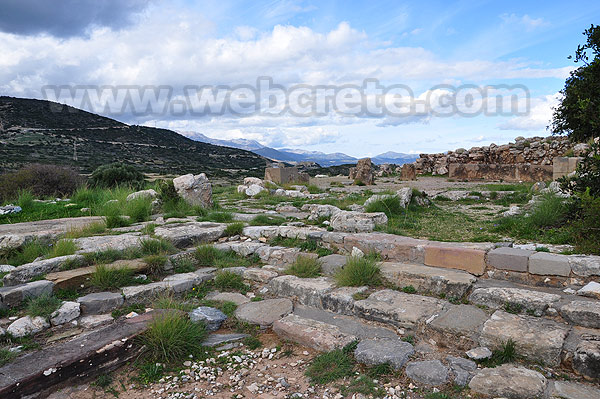 In 1901, Boyd also partially excavated a monumental shipshed, her ‘Shore House,’ and a fortification wall on the coast, as well as a number of burials near the coast at Sphoungaras, and house remains and chamber tombs on the ridge of Pera Alatsomouroi immediately east of Gournia. Her harbor excavations remain unpublished.
In 1901, Boyd also partially excavated a monumental shipshed, her ‘Shore House,’ and a fortification wall on the coast, as well as a number of burials near the coast at Sphoungaras, and house remains and chamber tombs on the ridge of Pera Alatsomouroi immediately east of Gournia. Her harbor excavations remain unpublished.
One senses that Boyd was trying to produce archeological results comparable to Arthur Evans’ work at Knossos and Frederico Halbherr’s at Phaistos. In this she was successful—of all prehistoric sites in Greece, Gournia gives the visitor the best picture of what a Late Bronze town actually looked like. The finds from inside the houses also illustrate the life of the town, as Boyd remarked in her 1908 publication: “The chief archaeological value of Gournia is that it has given us a remarkably clear picture of the everyday circumstances, occupations, and ideals of the Aegean folk at the height of their true prosperity.”
In 1910, Richard Seager excavated a 70-meter tract of small tombs at Sphoungaras about 300 meters north of Gournia, near the coast. He found an Early Minoan I–Late Minoan I cemetery consisting of inhumations and burials in rock shelters, a possible house tomb, pithoi, and larnakes.
In the 1960’s, excavations by the Greek Archaeological Service found the foundations of the cement phylakeion (storage room) at the northwest edge of the Gournia ridge, uncovering many bones and pottery from tombs of the Early Minoan period and later.
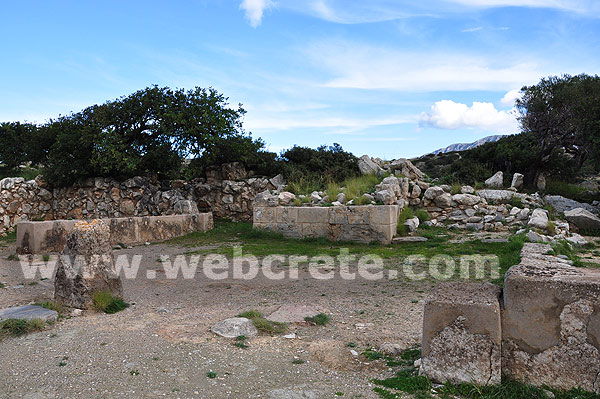 In 1971, 1972, and 1976, Costis Davaras—Ephor of East Crete—and Jeffrey Soles carried out cleaning excavations and made studies at Gournia of the tombs (cleaned for consolidation; see Soles, AJA 83, 1979, pp. 156-157), the early town, and the palace. Davaras’ excavations on the floors of the Mycenaean-period House He produced well-dated pottery of the LM IIIA period. The cleaning of Tombs I and III yielded Early Minoan pottery, seals, ivory plaques, and bits of gold and silver jewelry, as well as Middle Minoan vases. Davaras also excavated Tomb IV and probably sank a large long trench, now filled with stones, south of this tomb.
In 1971, 1972, and 1976, Costis Davaras—Ephor of East Crete—and Jeffrey Soles carried out cleaning excavations and made studies at Gournia of the tombs (cleaned for consolidation; see Soles, AJA 83, 1979, pp. 156-157), the early town, and the palace. Davaras’ excavations on the floors of the Mycenaean-period House He produced well-dated pottery of the LM IIIA period. The cleaning of Tombs I and III yielded Early Minoan pottery, seals, ivory plaques, and bits of gold and silver jewelry, as well as Middle Minoan vases. Davaras also excavated Tomb IV and probably sank a large long trench, now filled with stones, south of this tomb.
In 1984, Davaras continued the excavation at House He by opening four trenches south of the porch (Room 31). During this excavation, Davaras uncovered the south wall of Rooms 33 and 38, and the south end of the east wall of Room 31. This excavation also revealed that the porch (Room 31) was bounded on the southwest by an ashlar wall about 2.10 m long.
From 1992–1994, Vance Watrous and Davaras conducted a regional archaeological survey of the area around Gournia in the northern Isthmus of Ierapetra. The survey documented the settlement history of the region during the Final Neolithic–Late Roman period, and its relation to the development of Gournia as a regional center.
During 2008–2009, Watrous organized a cleaning operation of the structures and walls along the coast at Gournia, including the ‘Shore House’ originally dug by Boyd in the early 20th Century. During these two seasons, Watrous and his team revealed more of the monumental Neopalatial shipshed, two sets of fortification walls with towers, a cobbled street connecting the settlement with the harbor, and a system of Minoan agricultural terraces.
Current Excavations
In 2010, systematic excavation began again at Gournia, with the primary goal of investigating the earlier unknown phases (Early Minoan II–Middle Minoan II) of the town. Excavations are planned to
continue through 2014. In 2010, trenches were opened in four areas.
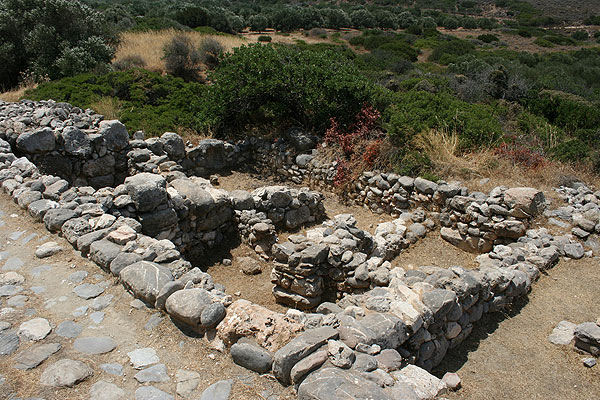 Trench 1 in Boyd’s dump produced EM II–LM IIIB sherds, including large LM IIIB pithoi, a LM I Palace Style jar, and a Knossian LM IB vase. Trench 2, northeast of House Ea, recovered substantial amounts of Edith Hall’s Early Minoan III–Middle Minoan IA North Trench dump deposit. Trench 3, north of House Ea, discovered a Middle Minoan IIB house with a cobble courtyard. The area around Trench 4 produced two rooms used for storage and work built in Late Minoan IB. These rooms contained a foundation deposit (triton shell, ash, and animal bones) and a large number of storage jars, one of which bore a Linear A inscription.
Trench 1 in Boyd’s dump produced EM II–LM IIIB sherds, including large LM IIIB pithoi, a LM I Palace Style jar, and a Knossian LM IB vase. Trench 2, northeast of House Ea, recovered substantial amounts of Edith Hall’s Early Minoan III–Middle Minoan IA North Trench dump deposit. Trench 3, north of House Ea, discovered a Middle Minoan IIB house with a cobble courtyard. The area around Trench 4 produced two rooms used for storage and work built in Late Minoan IB. These rooms contained a foundation deposit (triton shell, ash, and animal bones) and a large number of storage jars, one of which bore a Linear A inscription.
The 2011 excavations revealed much more of early Gournia, including an early Protopalatial plaster floor under House Aa; a Late Minoan IIIA:1/2 painted floor, along with imported Late Minoan IIIB stirrup jars and amphoras in House He; a large Middle Minoan IIIA and Late Minoan IA/B cult deposit near the stone baetyl, dating at least part of the construction of the palace to Middle Minoan IIIA; a large Middle Minoan building under the palace; a Protopalatial street north of House Ab with a Neopalatial shrine with an inscribed votive jug and rooms on either side, one with a potter’s bat or wheel; and north of House Ea a Middle Minoan II workshop, perhaps concerned with pottery production.
In 2012, excavations along the north edge of the town exposed a second cobbled street from the Protopalatial period, and stone vase and pottery workshops. In the area of the Minoan palace, investigations produced a tin ingot (probably from Afghanistan), a deposit of decorated drinking cups and incense burners that illustrate one of the activities of the palace, and an inscribed Linear A tablet demonstrating that LM IB Gournia was a fully literate administrative center with written records, an archives organized by sealings, and a system of receipts using stamped roundels.
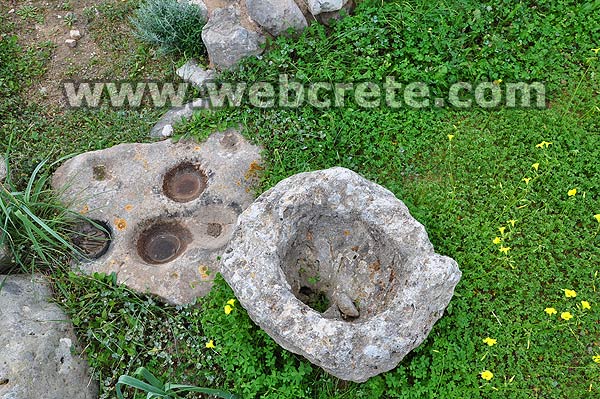 The 2013 season focused on the palace and the north edge of the settlement. In the palace, we revealed more of a Protopalatial paved court and part of an EM structure underneath. In the north edge of the settlement, we completed the excavations of the Pit House, the Northwest and Northeast areas, and discovered a metalworking area in the northwest. The final excavation season was from June 16-July 26, 2014. The 2014 season focused on cleaning up and connecting areas of excavation from 2010-2014. In the palace, we possibly discovered more of the earlier street system and that feasting may have taken place in the courtyard. In the north edge of the settlement, we revealed more of the Northwest area, Pit House, and Metal Workshop, and discovered Neopalatial kilns to the west.
The 2013 season focused on the palace and the north edge of the settlement. In the palace, we revealed more of a Protopalatial paved court and part of an EM structure underneath. In the north edge of the settlement, we completed the excavations of the Pit House, the Northwest and Northeast areas, and discovered a metalworking area in the northwest. The final excavation season was from June 16-July 26, 2014. The 2014 season focused on cleaning up and connecting areas of excavation from 2010-2014. In the palace, we possibly discovered more of the earlier street system and that feasting may have taken place in the courtyard. In the north edge of the settlement, we revealed more of the Northwest area, Pit House, and Metal Workshop, and discovered Neopalatial kilns to the west.
Gournia Ancient site Photo Gallery
Gournia: New Perspectives on Minoan Architecture and Urbanism - University of Toronto, 5-7 January 2015
Additional Info
Historical Period: Minoan (3000 BC-1400 BC)
Location: 2,5 km to east of Pachia Ammos Village
Opening Hours: 08:00 to 15:00 except Mondays
Access: Asphalt road – Contact e-mail: efalas@culture.gr Phone: +30 28420 93028
Entrance Fee: 2€, Reduced 1€
More about the area of Pachia Ammos
Pachia Ammos Beach and Village
Pachia Ammos is situated in the northern part of the county of Ierapetra. It covers the area from the western…
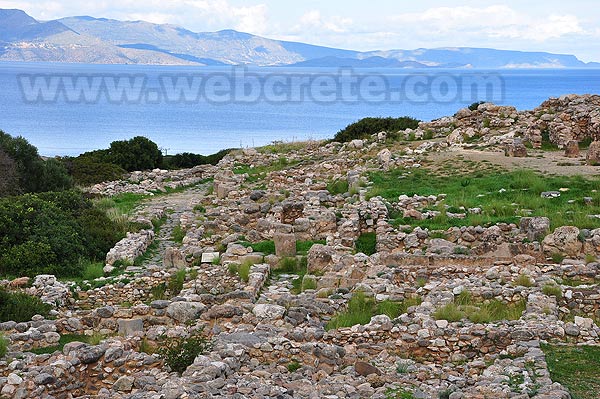
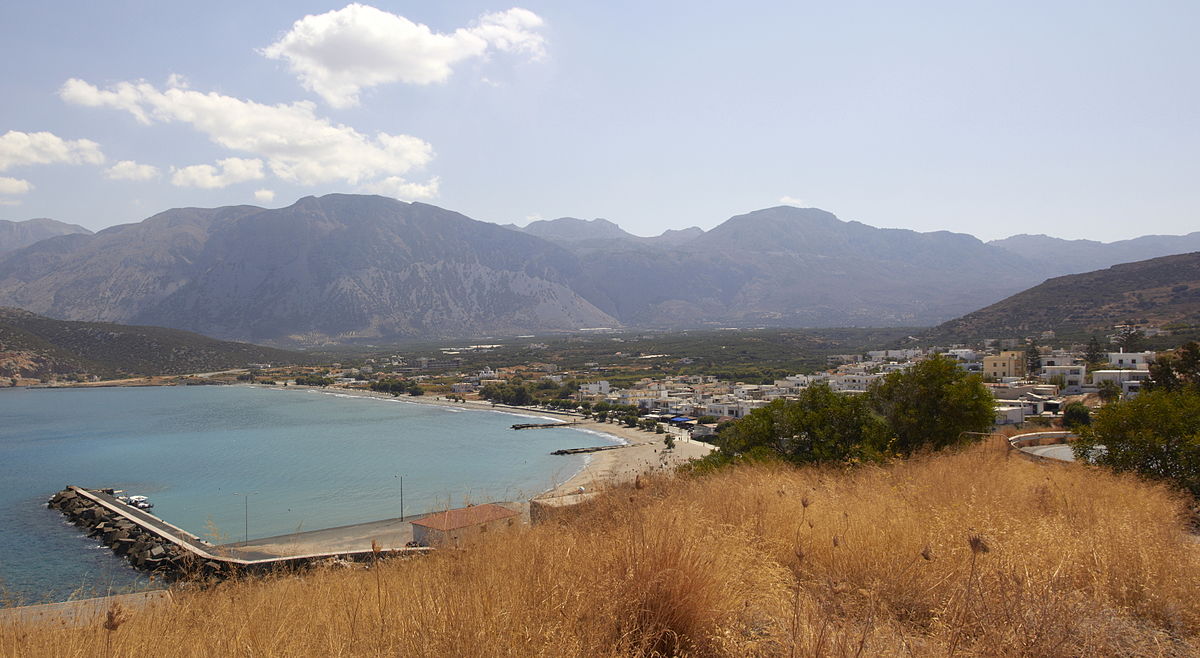
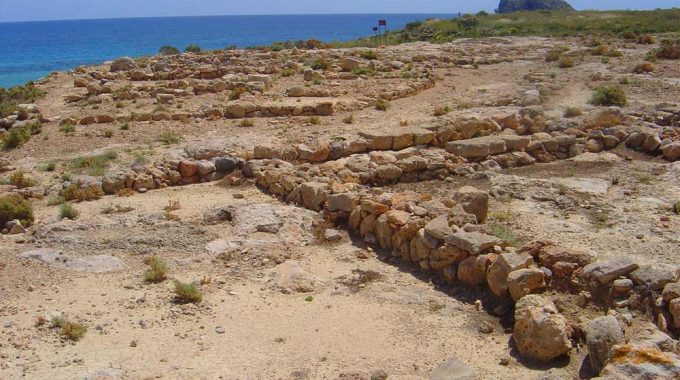
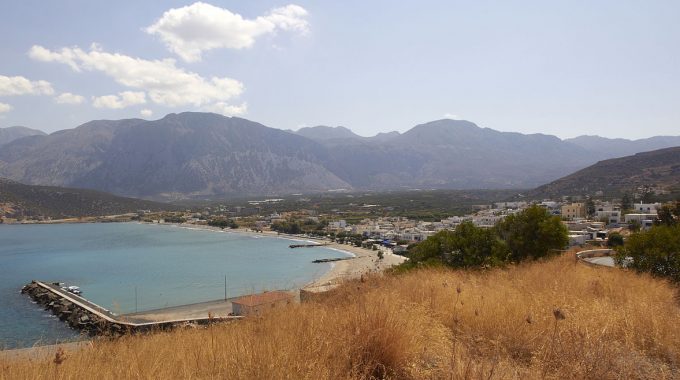
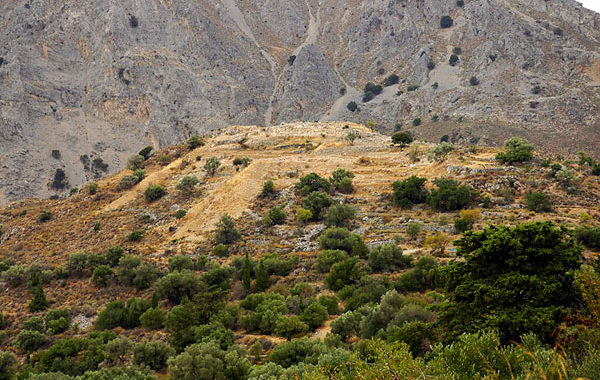
This Post Has 0 Comments